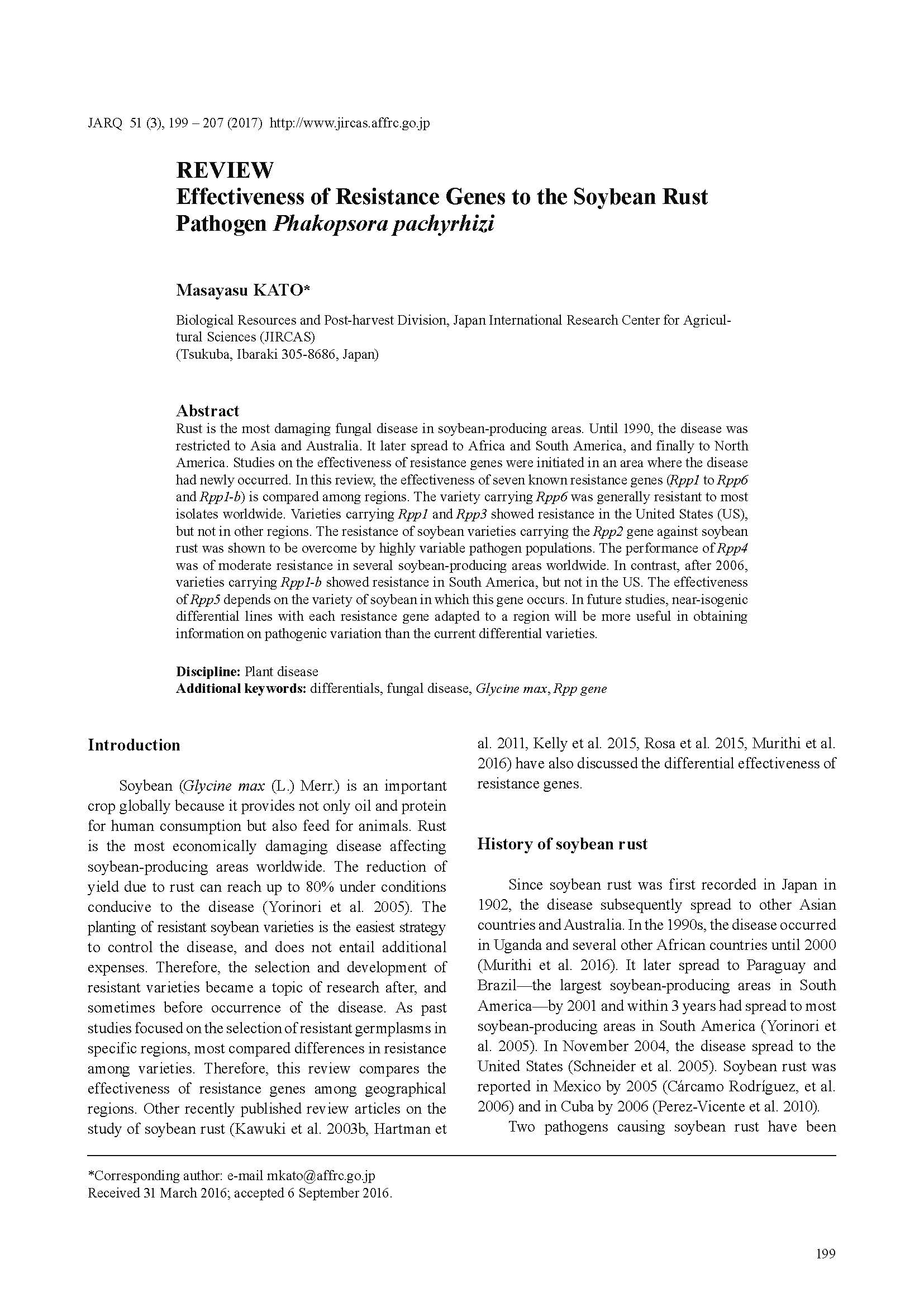Rust is the most damaging fungal disease in soybean-producing areas. Until 1990, the disease was restricted to Asia and Australia. It later spread to Africa and South America, and finally to North America. Studies on the effectiveness of resistance genes were initiated in an area where the disease had newly occurred. In this review, the effectiveness of seven known resistance genes (Rpp1 to Rpp6 and Rpp1-b) is compared among regions. The variety carrying Rpp6 was generally resistant to most isolates worldwide. Varieties carrying Rpp1 and Rpp3 showed resistance in the United States (US), but not in other regions. The resistance of soybean varieties carrying the Rpp2 gene against soybean rust was shown to be overcome by highly variable pathogen populations. The performance of Rpp4 was of moderate resistance in several soybean-producing areas worldwide. In contrast, after 2006, varieties carrying Rpp1-b showed resistance in South America, but not in the US. The effectiveness of Rpp5 depends on the variety of soybean in which this gene occurs. In future studies, near-isogenic differential lines with each resistance gene adapted to a region will be more useful in obtaining information on pathogenic variation than the current differential varieties.

